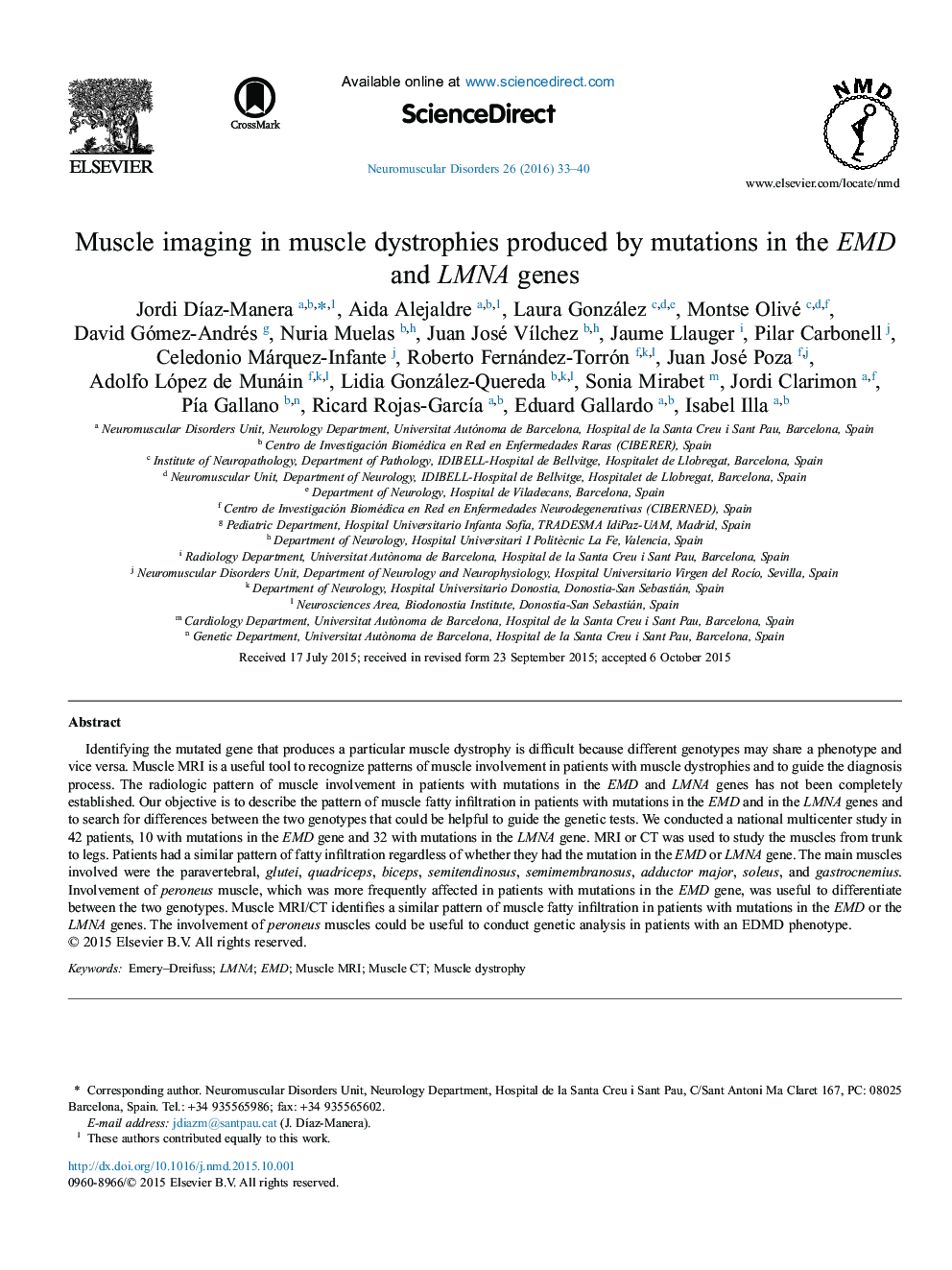| کد مقاله | کد نشریه | سال انتشار | مقاله انگلیسی | نسخه تمام متن |
|---|---|---|---|---|
| 3078845 | 1189271 | 2016 | 8 صفحه PDF | دانلود رایگان |
• Muscle MRI in Emery–Dreifuss patients is identical regardless of the genotype.
• LMNA mutated patients have the same MRI pattern of muscle atrophy.
• Heatmaps are useful to identify patterns on MRI of patients with muscle dystrophy.
Identifying the mutated gene that produces a particular muscle dystrophy is difficult because different genotypes may share a phenotype and vice versa. Muscle MRI is a useful tool to recognize patterns of muscle involvement in patients with muscle dystrophies and to guide the diagnosis process. The radiologic pattern of muscle involvement in patients with mutations in the EMD and LMNA genes has not been completely established. Our objective is to describe the pattern of muscle fatty infiltration in patients with mutations in the EMD and in the LMNA genes and to search for differences between the two genotypes that could be helpful to guide the genetic tests. We conducted a national multicenter study in 42 patients, 10 with mutations in the EMD gene and 32 with mutations in the LMNA gene. MRI or CT was used to study the muscles from trunk to legs. Patients had a similar pattern of fatty infiltration regardless of whether they had the mutation in the EMD or LMNA gene. The main muscles involved were the paravertebral, glutei, quadriceps, biceps, semitendinosus, semimembranosus, adductor major, soleus, and gastrocnemius. Involvement of peroneus muscle, which was more frequently affected in patients with mutations in the EMD gene, was useful to differentiate between the two genotypes. Muscle MRI/CT identifies a similar pattern of muscle fatty infiltration in patients with mutations in the EMD or the LMNA genes. The involvement of peroneus muscles could be useful to conduct genetic analysis in patients with an EDMD phenotype.
Journal: Neuromuscular Disorders - Volume 26, Issue 1, January 2016, Pages 33–40
